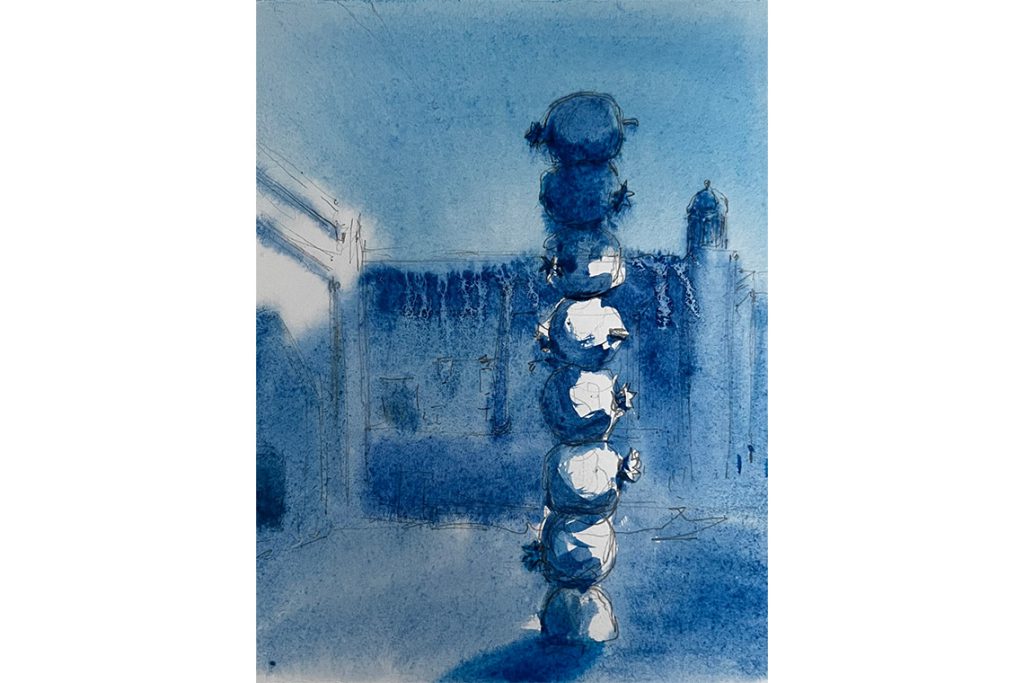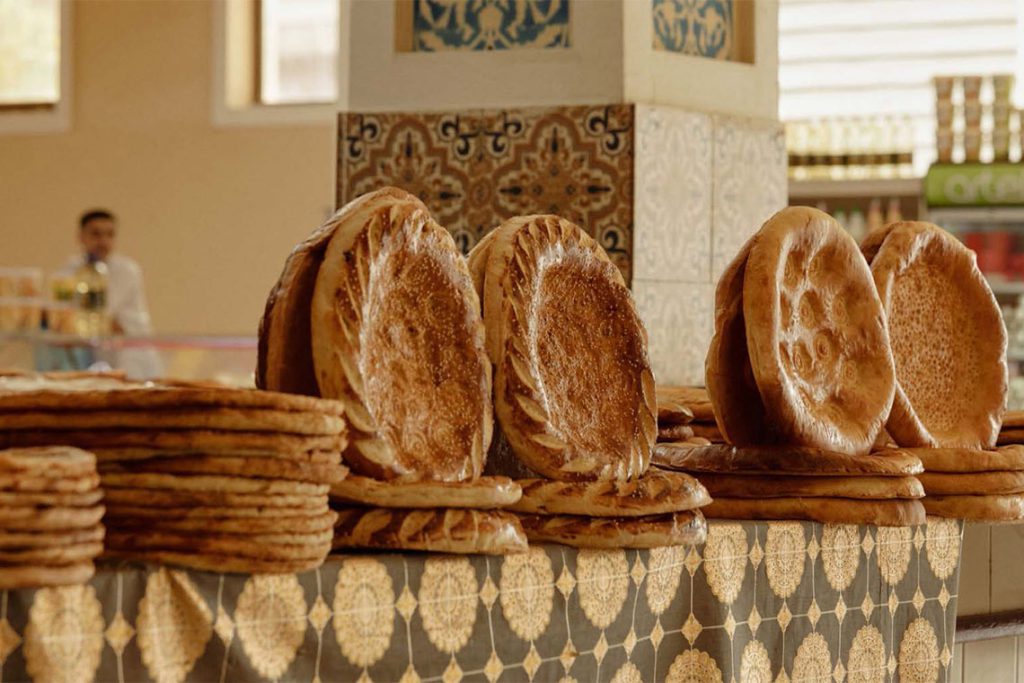The Artistic Director of Recipes for Broken Hearts, the first edition of the Bukhara Biennial, looks ahead to the opening in September and shares the inspiration behind her curatorial theme.
Canvas: How did you become involved with the Bukhara Biennial?
Diana Campbell: The Bukhara Biennial is an initiative of the Uzbekistan Arts and Culture Development Foundation (ACDF) and a long-term dream project of its commissioner, Gayane Umerova. Friends of the foundation, such as Aaron Cezar and Amin Jaffer, who have seen my work over time, have been spending time in Uzbekistan. I’m one of the few contemporary art curators who works consistently with craft, so both of them thought that this was a good fit. Craft in Uzbekistan is unlike anything I’d seen before. I recognised a unique ability to do something I care about that I couldn’t do anywhere else in the world.
How is craft in Uzbekistan different? How does it relate to its contemporary art scene?
If you ask an artist, they will mention artisans. There isn’t that same hierarchy that we see in most developed art scenes. The ACDF has been supporting artisans for a really long time. For example, in Venice, there’s a project called Homo Faber, a biennial for craft, which has a guide that mentions the names of master artisans and has interviews with them. The ACDF was very involved in that. It’s not about the object, it’s also about the people making the object and having contact with the people making the object. In Bangladesh, I work with artisans as well, but it’s taken me 10 years to find them. Here, I came in with that groundwork already having been done by ACDF. These artisans are not just in the urban centres – they’re all over the country. So the biennial is a cross section of craft traditions. When I say “traditions”, these artisans are not repeating what they already do. There’s a change, there’s something contemporary about it because of the collaboration with artists.
What challenges have you encountered working with craftspeople?
In Uzbekistan, many weavers live in the Fergana Valley and if the weather is bad, the road gets cut off. A freak rainstorm might prevent ceramics from drying. This also happens in India or the Philippines. Some places don’t have electricity, so if they aren’t connected they aren’t able to communicate with you. Most artisans are not on a 24/7 WhatsApp communication cycle, so it’s not very simple. It’s much easier to hire a production company to produce your artwork, but I know we’re working with people who are making objects rather than objects that are devoid of people.

Is there value placed on working this way?
That’s what we’re trying to do with the show. I see a big problem with it globally, including projects I’ve worked on. It’s just the art world system, where the person with the idea gets their name recognised, and the person that made something is reduced to what they do. I wanted to do something different in my practice, and ACDF has the same values in terms of how they treat craftspeople. The theme for the biennial comes from this story of the national dish, palov, which apparently was invented to cure the broken heart of a prince who couldn’t marry the daughter of a craftsman – but that’s just her dad’s profession. She’s anonymous. She didn’t get to eat any of the palov. We want to bring everyone to the table.
How is art versus craft approached in Uzbekistan and how will the biennial reflect that?
There’s a lot of interest in this issue globally, even in our age of digital technology. Craft is something that only people can make, especially those who have carried these traditions for a long time. Yet tradition changes over time, especially in a place like Uzbekistan, which has had so many cultures. You see people here who look so different from one another because of the overlay of Uyghur, Turkic Arab, Persian, Russian and beyond, and you see that influence in the handicrafts. The biennial will present a different way of thinking about that dialectic between the thinker and the maker. We can all be thinkers and makers. That’s not to reduce conceptual art – there is conceptual art in the show – but it’s going to shed light on what those hierarchies or problematics could be. It’s a big experiment. Also, because all the projects are commissions, we’re looking at them with a critical eye, asking, “Is this a collaboration? Or is this just a foreign person asking a local person to do something with no input?” We’re really trying to change that 1990s vibe of a foreign artist going to a place they’ve never been before and ‘collaborating’ with local people. We want to take it deeper.
What are some of the deep dives that visitors will take?
There are so many. Yunus Farmonov, a Bukharan illustrator, paints watercolours for tourists, but there’s something more than that when I look at his work. I invited him to sit with me and think about what the biennial commissions are going to look like. It’s this collaboration between an illustrator, artistic ideas and a curator to visualise works in the space. He lives in Bukhara, he sees these sites all the time, so it’s great to have his feedback. I’m a foreigner – I’m going to go in and make an exhibition that I think I want to see, but to have a local person tell you their thoughts about all the ideas and draw them out is really special. These visualisations are an exciting way into the other point of the biennial of taking craftspeople, or talented people like Yunus, out of just making things for tourists and towards making something more elevated. The free biennial catalogue will let you navigate the biennial through his imagination of all of the artworks in his city.

Which works can you share with us ahead of the opening?
There is an interesting multi-layered collaboration by Himali Singh Soin and David Soin Tappeser, who form a collective called hylozoic/desires. Hung above Bukhara’s canal will be their multi-kilometre-long woven silk ikat, where the artisans, rather than just weaving ikat patterns, weave scientific maps of the evaporating Aral Sea, the world’s fourth-largest inland lake. It’s almost gone, people can’t eat fish there anymore because there are none. It’s a global story of environmental heartbreak. If you look at the Aral, it kind of looks like a heart, but a heart that needs its water back to take shape. They will also do performance ceremonies with music to call the water back to the site. We’re crediting everyone that is working on the project, from making the wefts, the dyeing and so on, and documenting the whole process.
Another work is by Erika Verzutti, who works with art history and the vernacular sculptural shapes you see in life, often fruit. She makes endless columns, referencing Brancusi. In Bukhara, she was moved by the wooden columns holding up mosques and prayer spaces and wanted to work with a master column-maker. She met Shonazar Jumaev, who creates massive wooden pillars. Together, they’re making a column of pomegranates, an Uzbek fertility symbol. It’s not Erika telling a column-maker what to do, as they’re going back and forth to inform the form. This work will be placed in front of a carpet shop with antique pillars, so you’re going to see Erika’s contemporary column in the presence of ancient columns.
The biennial theme also touches on neuroaesthetics, the process by which the brain responds to art, beauty and aesthetic stimuli. Why has this subject been on your mind?
People underestimate the role of beauty in life. It’s something that people try to strip away. I’m very close to the Indian-American architect Suchi Reddy, who is also in the biennial and who blew my mind when she said that Johns Hopkins University hired her to design hospital suites for the families of coma patients because the environment can impact their brains. We over-emphasise facts and under-emphasise feelings. Feelings have factual consequences, right? I studied under the psychologist Daniel Kahneman and learned how there are choices that you can make, even spatially, that will impact your well-being. “Neuroaesthetics” wasn’t a word at the time, but Ibn Sina was trying to diagnose heart sickness with the same rigour as heart attacks and looking at the role of beauty. That idea has always been there, it’s just more scientifically advanced now.
I find a lot of these myths – Himali’s ikat or the palov – have artisans who are mistreated. The ikat myth is very beautiful. A silk weaver was being forced to marry his youngest daughter to the king, who was an old man. The weaver didn’t want to do this, so the king basically said that if the weaver could make something even more beautiful than his daughter, then he would not go ahead with the marriage. So, the weaver went to a pond and he cried, and a tear hit the water, creating a ripple, and there was a rainbow above. That’s what made the ikat. That’s also what the biennial is trying to do. Beauty or making can also be a form of resistance, and it’s important to have artisans as collaborators and protagonists in their own stories. Bukhara is full of these kinds of stories and Uzbekistan is a very relational place. Recently I gave an interview with Nicolas Bourriaud, a French curator who invented relational aesthetics. He asked if relational aesthetics as a text was circulating in South Asia in the 1990s and 2000s. The answer is no, but life there is very relational. Even though it didn’t have that term, it was very much there. Uzbekistan is like that as well.
The inaugural Bukhara Biennial will run from 5 September to 20 November 2025



